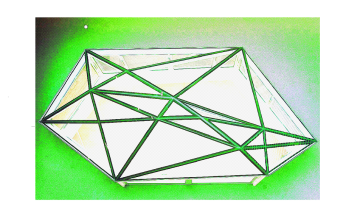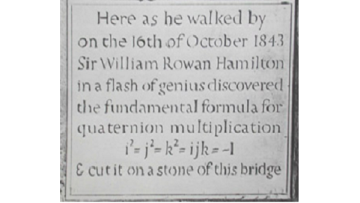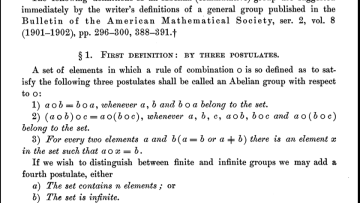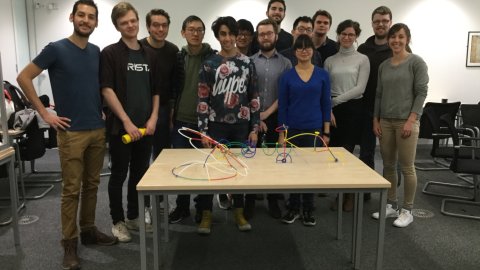Oxford Mathematician Karin Erdmann specializes in the areas of algebra known as representation theory (especially modular representation theory) and homological algebra (especially Hochschild cohomology). Here she discusses her latest work.
At the beginning of the twentieth century, some minor algebraic investigations grabbed the interest of a small group of American mathematicians. The problems they worked on had little impact at the time, but they may nevertheless have had a subtle effect on the way in which mathematics has been taught over the past century.
Minimal switches and clocks
Abstract
Switch-like and oscillatory dynamical systems are widely observed in biology. We investigate the simplest biological switch that is composed of a single molecule that can be autocatalytically converted between two opposing activity forms. We test how this simple network can keep its switching behaviour under perturbations in the system. We show that this molecule can work as a robust bistable system, even for alterations in the reactions that drive the switching between various conformations. We propose that this single molecule system could work as a primitive biological sensor and show by steady state analysis of a mathematical model of the system that it could switch between possible states for changes in environmental signals. Particularly, we show that a single molecule phosphorylation-dephosphorylation switch could work as a nucleotide or energy sensor. We also notice that a given set of reductions in the reaction network can lead to the emergence of oscillatory behaviour. We propose that evolution could have converted this switch into a single molecule oscillator, which could have been used as a primitive timekeeper. I will discuss how the structure of the simplest known circadian clock regulatory system, found in cyanobacteria, resembles the proposed single molecule oscillator. Besides, we speculate if such minimal systems could have existed in an RNA world. I will also present how the regulatory network of the cell cycle could have emerged from this system and what are the consequences of this possible evolution from a single antagonistic kinase-phosphatase network.
Mathematical modelling of sleep and (other) daily biological rhythms: light, clocks and social jetlag
In-silico modelling of the tumour microenvironment
Abstract
Despite progress in understanding many aspects of malignancy, resistance to therapy is still a frequent occurrence. Recognised causes of this resistance include 1) intra-tumour heterogeneity resulting in selection of resistant clones, 2) redundancy and adaptability of gene signalling networks, and 3) a dynamic and protective microenvironment. I will discuss how these aspects influence each other, and then focus on the tumour microenvironment.
The tumour microenvironment comprises a heterogeneous, dynamic and highly interactive system of cancer and stromal cells. One of the key physiological and micro-environmental differences between tumour and normal tissues is the presence of hypoxia, which not only alters cell metabolism but also affects DNA damage repair and induces genomic instability. Moreover, emerging evidence is uncovering the potential role of multiple stroma cell types in protecting the tumour primary niche.
I will discuss our work on in silico cancer models, which is using genomic data from large clinical cohorts of individuals to provide new insights into the role of the tumour microenvironment in cancer progression and response to treatment. I will then discuss how this information can help to improve patient stratification and develop novel therapeutic strategies.
Facial phenotyping and biases
Abstract
Computer vision approaches have made huge advances with deep learning research. These algorithms can be employed as a basis for phenotyping of biological traits from imaging modalities. This can be employed, for example, in the context of facial photographs of rare diseases as a means of aiding diagnostic pathways, or as means to large scale phenotyping in histological imaging. With any data set, inherent biases and problems in the data available for training can have a detrimental impact on your models. I will describe some examples of such data set problems and outline how to build models that are not confounded – despite biases in the training data.





